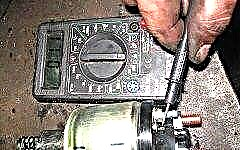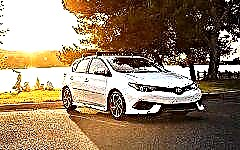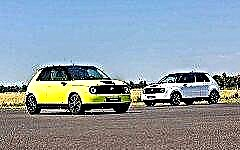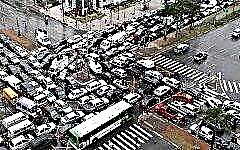

The content of the article:
- What is the Vienna Convention
- Lost in translation
- Movement features
- Differences between European traffic rules
- Fighting for your rights or avoiding responsibility
An auto lady from Voronezh, Lyubov Kobtseva, fined for incorrect parking, filed a lawsuit with the Supreme Court demanding clarification of the controversial aspects of domestic traffic rules.
In her opinion, the term "intersection" is too vague, which does not allow for correct interpretation of some road signs. For example, the prohibition of parking, stopping, overtaking, as well as speed limits extend their effect to the intersection or until the end of the settlement without interruption at the points of exit from the adjacent territories.
Lyubov Kobtseva refers to the Vienna Convention, which calls the intersections of absolutely any roads intersections. In connection with this fact, she considers the Russian interpretation of the term inappropriate.
What is the Vienna Convention

A social survey of car owners, carried out at different times by different car publications, among all age groups and with different driving experiences, showed interesting statistics - almost no one knows about the existence of the Vienna Convention. Those who have heard about it cannot formulate its meaning and content.
Meanwhile, this is one of the documents signed half a century ago in the Austrian capital, which regulates and standardizes road traffic, as well as signs and even signals. The need for it arose with the spread of transport, when each country began to develop its own traffic rules, often radically different from the neighboring state.
This provision significantly impeded the implementation of international passenger and freight traffic, and also significantly reduced road safety. The combination of these factors led to mutual painstaking work to develop uniform rules.
Lost in translation

It was to the Vienna Convention that a motorist and a lawyer from Voronezh, fined for parking under a prohibitory sign, applied. Comparing paragraph 1.2 of the Russian rules with the wording of the convention, she came to the conclusion that the punishment imposed on her was unlawful.
Really, in other countries, especially in Europe, any intersection of roads is considered a crossroads. Such a simple definition saves drivers from ambiguous interpretation and confusion while driving on the highway. At the same time, limit signs end in front of the intersection, be it a large intersection in a large city or a secondary road adjoining in the countryside, and are re-installed after it.
Based on the Russian formulation of the term "crossroads", motorists have to not only monitor the traffic situation and keep track of prohibition signs, but also independently determine whether a particular road is sufficiently equipped to comply with the legislative concept. However, leaving the adjacent territory is categorically not recognized as an intersection. The auto lady is sure that the domestic interpretation of the “crossroads” is too wide, does not correspond to the international definition, confuses drivers and leads to unlawful fines.
Movement features

On the statement of the plaintiff, the Ministry of Internal Affairs informs that it does not find the slightest contradiction between the Russian traffic rules and the Convention. According to the department, the rules are extremely simple and straightforward:
- An intersection is an intersection of roads.
- A road is a strip of land or the territory of an artificial structure, specially equipped or adapted for the movement of vehicles along it.
- A well-equipped road is a road that has markings in accordance with the legislation and has road signs.
Thus, if a road intersects with an exit from a forest, a field, from a gas station or from the courtyard of a residential building, where there are no traffic lights, no markings, or road signs, then this is not an intersection.
It seems that everything is really transparent, but not only Lyubov Kobtseva got into an unpleasant situation, not understanding the terms. Many motorists, not only beginners, cannot clearly name the differences between "courtyard territory", "adjacent territory", "secondary road".
Adjacent is a section of the road located near the main road that does not have through traffic. These are parking lots, courtyards, gas stations, where you can enter and leave, but cannot be used as a full-fledged road. This territory does not have pedestrian crossings, traffic lights, road markings, sidewalks, and therefore cannot be considered a road.
The courtyard area has its own rules of passage, but the prohibitions are similar to those of the adjacent territory. It has sidewalks, but does not have markings and road signs. However, in some cases, the exits from the courtyards are equipped with certain signs, for example, indicating the direction of movement if there is an exit to a one-way road. How to assess this departure? Equipped or not? Will it become a crossroads or will it remain a courtyard area?
Differences between European traffic rules

The main and fundamental difference between driving in Europe is the strictness of the rules and their strict observance. For example, passengers even in the back seat must fasten their seatbelts, and using a mobile phone while driving is severely punished.
Overtaking and advancing
According to Russian rules, advance is called movement strictly within the boundaries of one's own lane at a speed exceeding neighboring cars. Whereas overtaking is such an advance, which involves leaving the opposite lane with a subsequent return to the original lane.
In Europe, however, these concepts are equal, therefore, if there is a sign prohibiting overtaking on the road, it will extend its effect to being ahead.
Fog lights and horn
If in the domestic traffic rules there are no mandatory instructions for the use of foglights, but only recommendations, then in Europe, for their illegal inclusion, you can get a considerable fine... For example, in the absence of fog or with too long use, an unpleasant meeting with police officers threatens.
A similar situation is with the horn, which is unacceptable to use to hasten a driver who has lingered at a traffic light. An impatient motorist will be fined for this behavior, because the horn is used only to prevent an emergency.
Motorway
There are also a number of key differences in the rules for driving on expressways:
- to change lanes, you should develop a speed of at least 80 km / h on the acceleration lane;
- if there are several lanes, you should move in the extreme right lane, rebuilding only for overtaking;
- stopping is permissible only in a specially designated section of the road, while an exit to the side of the road in the event of a breakdown is possible, although the attention of the police is attracted;
- you are allowed to get out of the car only in a reflective vest that has the color of your country (orange for France, yellow-green for Germany).
City traffic
The requirements for urban movement are also stricter in Europe. So, the speed should not be higher than 50 km / h, and in the center - even 30 km / h (with the Russian 60 km / h).
Before pedestrian crossings, you should stop even if a person has just approached the "zebra".
A speed limit sign means not only a ban on speeding, but also on reducing it below the indicator indicated on the sign.That is, if the sign is 120 km / h, then the motorist must drive strictly 120 km / h.
Fighting for your rights or avoiding responsibility?

Consideration of the claim of a citizen of Voronezh is scheduled for the end of May 2018, the result of which intrigues many motorists. A similar situation has already happened in Kaliningrad, when the driver Andrei Lobodin tried to challenge the rules regarding the roundabout. He believed that the recognition of the circle as the main road contradicts the same Vienna Convention, according to which at intersections the right of way is given to cars moving on the right.
In this case, the sign of the circular movement itself is only an indication of the direction without providing any advantages. In the absence of such a sign, the roundabout will turn into a combination of several intersections with exits from the adjacent territories, thereby further confusing motorists and increasing the accident rate in this section. However, having considered the statement of claim, the court recognized the traffic rules on the roundabout as legal and not contradicting the regulatory enactments.
What is this zeal of Russian citizens? An attempt to avoid responsibility by receiving a fine from a police officer, or legitimate assertion of your rights?
Automotive experts partly agree that in some situations, both road signs and lane markings can really confuse drivers. However, in response to any comment, the Ministry of Internal Affairs gives its arguments in favor of absolute clarity and transparency of the Russian rules. Andrei Lobodin failed to prove his case to the court - let's see how the trial of Lyubov Kobtseva ends.











